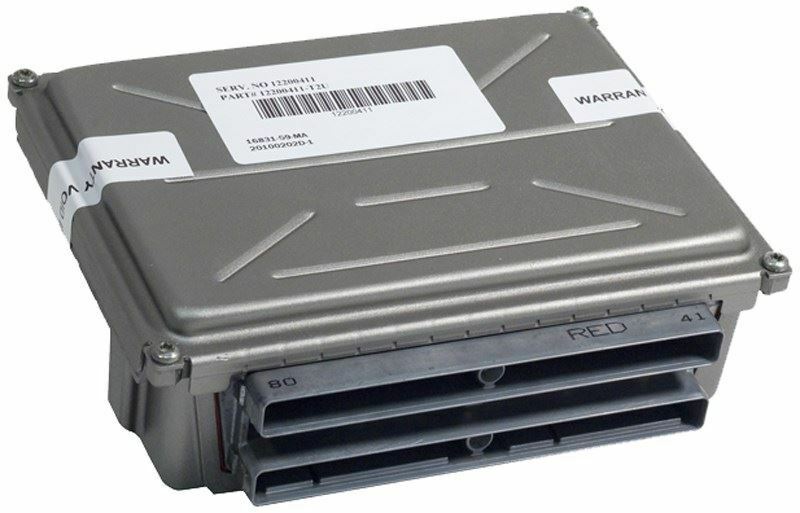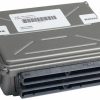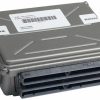Restore Your Vehicle’s Heartbeat and Drive with Confidence
Is your truck or SUV suffering from baffling electrical gremlins? Issues like a persistent check engine light, erratic shifting, stalling, or a frustrating no-start condition can often point to a failing Engine Control Module (ECM). This isn’t just an inconvenience; it’s a compromise on your vehicle’s reliability and your peace of mind. This replacement ECM, part number 12586242, is the definitive solution to restore the crisp, dependable performance you remember. It arrives at your door fully programmed with the latest GM software, tailored specifically to your vehicle’s VIN. This eliminates the need for expensive dealership visits and gets you back on the road faster.
Signs Your Engine Computer Needs Attention
A failing ECM can manifest in numerous ways, often mimicking other component failures. If you’re experiencing any of the following, it’s time to consider the brain of your vehicle’s powertrain:
- ✔ Check Engine Light (CEL): Especially with communication-related codes (U-series) or internal processor codes like P0601, P0606.
- ✔ Erratic Transmission Shifting: Harsh shifts, delayed engagement, or getting stuck in a gear are common symptoms as the ECM controls transmission logic.
- ✔ Engine Performance Problems: Unexplained stalling, rough idling, poor acceleration, and a noticeable drop in fuel economy.
- ✔ No-Start Condition: The engine cranks but won’t start, often due to a lack of fuel injector or ignition coil command from the ECM.
- ✔ Intermittent Electrical Issues: Gauges behaving strangely or other modules losing communication can be traced back to a faulty ECM.
Guided Installation for Your 2004 Isuzu Ascender ECM
We’ve made this repair as straightforward as possible. With basic hand tools and a little patience, you can have your vehicle running smoothly again. This is a plug-and-play repair, though a simple, tool-free security relearn procedure is required afterward.
- Safety First: Begin by disconnecting the negative terminal of your vehicle’s battery to prevent any electrical shorts.
- Locate the Module: On most compatible vehicles like the Trailblazer, Envoy, and Ascender, the ECM is located in the engine bay, next to the air filter box. On trucks like the Sierra and Silverado, it’s typically found on the driver’s side, under the battery tray.
- Disconnect and Remove: Carefully unclip the wiring harness connectors. They have locking tabs that need to be released. Once disconnected, unbolt the old ECM from its mounting bracket and remove it.
- Install the New ECM: Mount your new, pre-programmed ECM in the same location. Securely reconnect the wiring harnesses, ensuring they click into place.
- Reconnect Power: Reattach the negative battery terminal and tighten it securely.
- Perform Security Relearn: This final step syncs the new ECM with your vehicle’s anti-theft system. Turn the key to the ‘ON’ position (without starting) for 10-12 minutes, until the security light on the dash stops flashing and turns off. Turn the key off for 10 seconds. Repeat this cycle two more times (for a total of three cycles). Your vehicle should now start and run perfectly.
A Technician’s Note: The Power of a Solid Ground
“I remember a 2004 Sierra that came into the shop with classic ‘bad ECM’ symptoms—stalling, weird codes, the works. The owner had already bought a module from another supplier, but the problems persisted. Before condemning the new part, I did a voltage drop test on the main grounds. Sure enough, the main engine-to-chassis ground strap was corroded and barely making contact. After cleaning the connection points and installing a new ground strap, the truck ran like a top with its original ECM. It’s a powerful reminder: always verify your battery, terminals, and ground connections are clean and tight before replacing a major electronic component. It can save you a world of headache.”
Guaranteed Fitment for Your Vehicle
This module is a direct replacement for service number 12586242 and is compatible with a wide range of 2004 GM trucks and SUVs. It also replaces service numbers 19299226, 89017738, YFKD, YFKF, YFKH, YFKJ, YFKX, YFXL, YFXM, YFXN, YFXP, and YHTN. Please verify your model and engine below:
- 2004 Buick Rainier: 5.3L
- 2004 Cadillac Escalade, ESV, EXT
- 2004 Chevrolet Avalanche 1500
- 2004 Chevrolet Silverado 1500, 2500, 3500: (Gasoline, Non-Hybrid)
- 2004 Chevrolet SSR
- 2004 Chevrolet Suburban 1500, 2500
- 2004 Chevrolet Tahoe
- 2004 Chevrolet Trailblazer EXT: 5.3L
- 2004 GMC Envoy XL, XUV: 5.3L
- 2004 GMC Sierra 1500, 2500, 3500, Denali: (Gasoline, Non-Hybrid)
- 2004 GMC Yukon, XL 1500, XL 2500
- 2004 Hummer H2
- 2004 Isuzu Ascender: 5.3L
Take control of your repair and restore your vehicle’s performance and reliability. By providing us with your VIN upon purchase, you ensure a perfectly matched, ready-to-install module that solves the problem right the first time.
Do I need to get this ECM programmed by a dealer?
No. We handle all the programming for you before shipment. We use your vehicle’s VIN to load the latest GM-certified software, so it’s ready to install right out of the box after a simple security relearn procedure.
What is the security relearn and is it difficult?
The security relearn is a simple, tool-free process that syncs the new ECM to your vehicle’s anti-theft system. It involves cycling the ignition key and waiting about 10 minutes per cycle, three times in a row. We include detailed instructions, and it’s a crucial final step for the vehicle to start.
What information do you need from me after I order?
After you place your order, you will need to provide us with your vehicle’s 17-digit Vehicle Identification Number (VIN). This is essential for us to program the module correctly for your specific engine, transmission, and options.
Where is the ECM located on my 2004 GMC Sierra?
On most 2004 GM full-size trucks like the Sierra, Silverado, and Tahoe, the ECM is located in the engine bay on the driver’s side, typically mounted below or near the battery tray.
Can a bad ECM cause my transmission to shift hard?
Absolutely. The ECM (or PCM) controls both engine and transmission functions. It uses sensor data to determine shift points and line pressure. A failing module can result in harsh shifts, delayed shifting, or being stuck in one gear.


